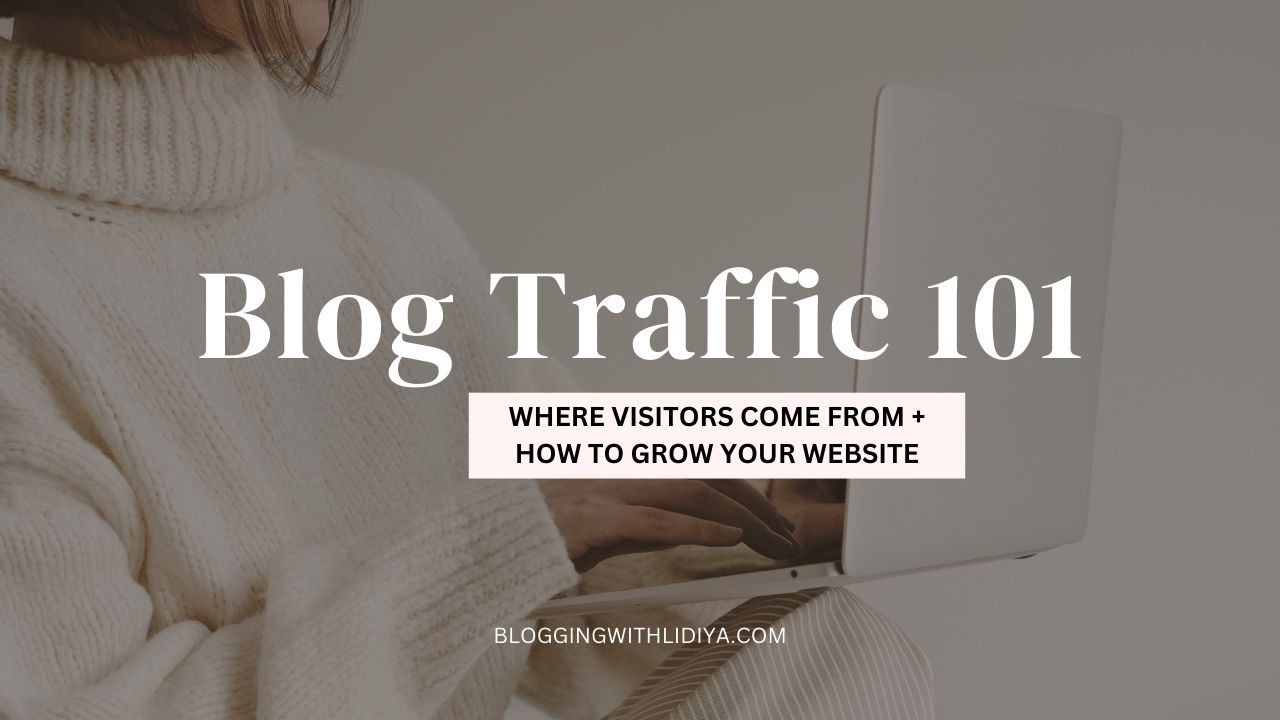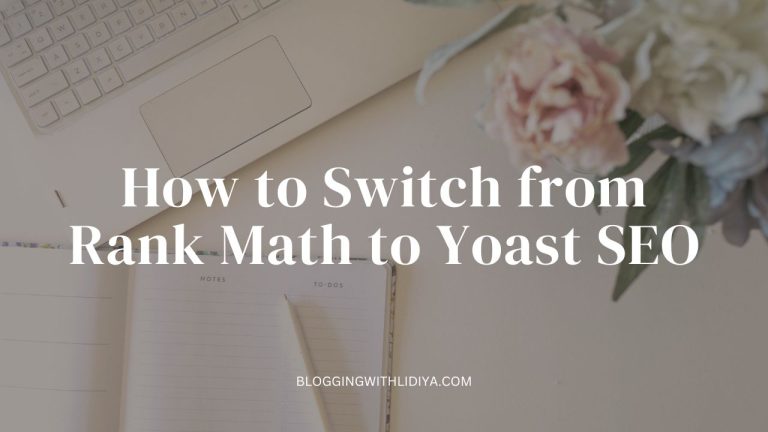Blog Traffic 101: Where Visitors Come From + How to Grow Your Website
Blog traffic is one of the key areas of your blogging business that you’ll need to consistently work on, and in this guide, you’ll learn where your website visitors can come from and how to grow your blog using the right strategies for each traffic source.
Don’t skip this part. You need those first 1000 visitors to your site to do anything after that and test what works in terms of content, optimization and monetization.
So, let’s dive in. I’ll try to keep it simple and strategic.
The 6 Types of Blog Traffic
Visitors can land on your site in multiple ways. And as a blogger, it’s important to know where they can come from, where they actually came from, and on what traffic source you should focus the most to double that traffic.
While Google Analytics can tell you a lot about your audience and what readers do on your website (as well as where they are coming from), it’s your responsibility to get familiar with the ways a blog gets traffic.
Remember, the traffic you drive is what will bring you money too. It’s how you can reach those people you can help with your content. And it’s how your blog gets recognized in your niche and approached by brands and sponsors.
Getting traffic takes time, especially when you’re just starting out. But that period is also important for how much you will earn some time from now as it allows you to get to know your audience, test all traffic and monetization strategies, find the ones that work best for your blog and concentrate solely on them.
Another thing I want to emphasize is that you don’t need a ton of traffic in order to be a happy, full-time blogger and earn enough. You can make money with a dedicated audience of 5,000 people, or with 20-30K visitors landing on your site monthly.
Now, let’s see what the different and reliable sources of traffic are.
1. Organic Traffic
Organic traffic is the traffic your site receives from search engines and it’s probably the most natural way to get people to your blog.
Any time a person types something in Google, they see a list of web pages. If yours is closer to the top and your title grabs their attention, they will click and check out your content. If they like it, they will stay longer, click on some of your internal links and explore more of what your blog has to offer.
In an ideal world, they would also read your story on the About page, subscribe to your newsletter, and become a fan. But that’s not how it works.
You can bring a ton of blog traffic organically by writing long-form and well-optimized blog posts and linking them effectively. That means a constant flow of visitors to your web pages, which in turn tells Google people like your site and it ranks you even higher.
I love organic traffic and it’s my main source of traffic for my main blog – Let’s Reach Success – due to all the content I’ve published over the years.
While Google changes its algorithm constantly and ranks websites differently every next year, you can count on your content strategy to work well. If your best blog posts don’t rank well now, it can happen a few months or a year from now.
In fact, many of my old posts started ranking years later, and that means more organic traffic for me without doing anything else to increase it.
The benefits of organic search traffic include:
- Ranking high in search engines;
- Building trust;
- It’s real human traffic;
- By growing your organic traffic, you’re making it harder for your competitors to outrank you;
- The right people land on your site – users fill in certain keywords in search engines and choose the most suitable web page to click on, which means they intentionally visit your site and thus have a bigger change to stay on it longer;
- Long-lasting results – this type of traffic, as opposed to the other ones you’ll see in this list, can last much longer and even forever;
- It’s free;
- You can dominate the search results for keywords related to your niche;
- It helps you make money from ads;
- Organic traffic brings in regular visitors – rank your pages by optimizing your content and Google will be bringing you hundreds, then thousands of visitors month after month. From then on, you can grow your traffic as much as your time, creativity and skills allow you to.
2. Referral Traffic
Referral traffic is the number of visitors coming to your blog through any link on another website. Or in other words, you get people referred to your site any time someone finds and clicks on your blog from any website other than a search engine.
Let’s not count social media sites in this category though, as there’s a separate one for Social Media Traffic.
The website your link is found on is the ‘referrer’ and you can track such places visitors came from with Google Analytics.
That happens by going to Reports > Acquisition > Traffic acquisition. Then, filter for the “Referral” channel.
A referrer can be another blog in your niche, a forum, a directory, a news aggregator (such as Reddit or Hacker News) or else.
Referral traffic matters for bloggers as it brings quality readers. It also has SEO benefits due to the backlinks you receive from other platforms.
The more places you’re mentioned on online, the more your brand gets recognized too. Google takes all that into consideration when ranking your blog.
Referral traffic is all about the links. Some of them you add yourself, others are by the owners of other websites.
Examples
- Writing an article for another blog in your niche and receiving a link to your site in the author bio or from the content;
- Answering a question on a Q&A site or a forum and including a link to one of your blog posts where people can find more information;
- Publishing videos on YouTube to diversify your content and linking to your blog from the description;
- Publishing content on Medium and LinkedIn;
- Paying for backlinks on other sites;
- Exchanging links – offering other bloggers to mention them in your content if they do the same with your blog;
- Getting interviewed for a blog or a podcast (there will be links to your blog too).
How to increase referral traffic?
- Pitch website owners who accept guest contributors, write a quality blog post and include a link back to your resource;
- Actively participate in forum discussions and have your website URL in your signature or link to relevant blog posts in the comments you leave;
- Publish a roundup post with the opinions of influencers in your niche or a quote from each, and then email every one of them personally to let them know they’ve been included in your latest article. Chances are, some of them will share that with their audience;
- Create an online course (free or paid) on a platform like Podia and mention different articles as additional reading for students so they can go to your blog and learn more;
- Become a content curator – gather interesting resources in your niche and create practical guides and informative posts about them. Quality pages on your website like that and which can’t be found anywhere else will receive backlinks from other publications;
- Influencer marketing – collaborate with brands or other bloggers (by paying them or returning the favor) and get mentioned in front of their audience;
- Leave insightful comments on other blogs;
- Create and publish infographics then email other website owners that might be interested in using them on their platform (you’ll be given credit with a backlink).
Keep in mind this…
Referral traffic isn’t on your list of priorities right now. Organic traffic is much more important and it fits well with the long-term picture of financial freedom you’re trying to create as a mom and a new blogger.
After some time and when you already have 5K visitors per month, you can look for different ways to increase blog traffic and build your brand.
Guest posting and being active on forums take time and effort, and these should be invested in other things during the first few weeks of your blog’s existence.
Referral traffic can also cost you a lot. Some bloggers tend to get obsessed with it and invest a lot of resources into getting featured on a big publication or building their reputation as an expert in a certain Q&A site, only to see it leads to bringing 100 more people to their blog each month, but none of whom take any further action.
3. Social Media
The next way to bring traffic to your blog is something we’re all familiar with – social media.
You can drive tons of traffic from Facebook, Instagram, Pinterest, TikTok, etc.
Whether it’s a follower who re-shared your IG post, a Pinterest graphic that went viral, or you shared your latest freebie on your Facebook page and boosted the post with Facebook ads, all these links can bring visitors back to your blog.
You can then find the exact sources of social media traffic in your Analytics dashboard by heading to Reports > Acquisition > Traffic Acquisition. Filter this report by “Session source” to see traffic from specific social media platforms.
Let me remind you not to go all-in on all of the big social media channels. There are too many other things you need to be doing as a new mom blogger and social media traffic isn’t even your most important source. So find the one network that works best for you and your blog and stick with it. Over time, you can master it and it can grow your traffic tenfold.
Short-form video content on Instagram and TikTok is quite an easy way to get started, even if you don’t want to show your face online. You can create Reels that are a few seconds long or post pretty graphics (I create mine in Canva) and they can get many views even if your account is brand new.
Moving onto the next way to grow your blog.
4. Email Marketing
Email marketing as a blog traffic source is the number of people who came to your site from the links you included in your newsletter.
That’s one of the most genuine ways to engage people and get traffic and it’s not related to any other audience, but your own.
To get traffic from email, you need to have a newsletter, place opt-in forms throughout your blog, and create a freebie so that people will have a good reason to subscribe.
From then on, you will send out weekly newsletters with your best content, or might even email people every time there’s a blog post worth checking out.
The more people you have on your email list, the more this source of traffic will mean to you.
👉 If you need help with email marketing, check out my Email List Bundle. You’ll find swipe copy, done-for-you templates, and tips and examples to help you start and grow your email list as a blogger.
5. Paid Search
Paid search is the traffic you get from search engines through paid advertising via Google AdWords or another paid search platform.
You might be paying each time one of your ads is clicked (which is pay-per-click advertising, or PPC) or when your ad is displayed (that’s called cost-per-impression, or CPI).
Now, that’s not an investment I’ve ever made and requires some testing and a budget. With the many possibilities to drive traffic organically and from referrals and social media, paid advertising isn’t something you need.
You might try it later on when you’re earning some money online already, but for now, just be familiar with what this traffic source means.
6. Direct Traffic
Last but not least, there’s direct traffic. That’s when the referrer or source is unknown.
It could be when a person directly types the URL of your site in their browser instead of googling it and then clicking a link to your homepage, or coming from any other platforms where one of your web pages is mentioned and linked to.
You shouldn’t expect that any time soon because your blog isn’t a brand yet. If you notice an increase in your direct traffic over time, that means more people know about you and directly type your URL so they can see what new content you have.
How to get direct traffic?
- Build a great platform that gets attention and become a big name in your niche;
- Have a good-looking and optimized website;
- Have all your brand elements in place;
- Have a presence on social media;
- Share your story and connect with people on a personal level;
- Update your blog often so there’s always new content people can see when they land on your page;
- Give them easy navigation and a good experience on mobile devices.
Final words
So, that’s what you need to know about the types of blog traffic. That’s how visitors come to your platform and how you can leverage each of these sources.
What do you think?
Will organic traffic be what you aim for first, or will you combine that with – let’s say – getting page views from Pinterest to your new blog?
Let me know in the comments below!







